Peacock Moss (Taxiphyllum sp. ‘Peacock’) is also commonly known as Spiky Moss (Taxiphyllum spiky)
There’s much debate over whether ‘Peacock Moss’ and ‘Spiky Moss’ are in fact the same Moss??? with the two often being confused…
So what’s the difference?
The confusion comes from the conditions the moss is grown in. If you grow this moss in a low-light low Co2 environment it will look less dense and longer, where as with high-light & high Co2 it’ll grow more dense and carpet more effectively.
Peacock Moss & Spiky Moss are the exact same moss.
Due to the differences in growing conditions, the confusion has spread through mis-labelling the Taxiphyllum spiky as a Peacock Moss Sp. (ref. Dr. Benito Tan – Moss Expert)
Whether Spiky Moss or Peacock Moss, it’s still a great mossy addition to your aquarium! Long cherished for its beautiful frond-like structure that has been said to mirror the peacock.
- Related: 12 Best Carpeting Plants
- Related: 11 Common + 7 Rare Moss Types
- Related: Best Stem Plants
- Related: Top 16 Background Plants
- Related: Top 10 Aquarium Foreground
Table of Contents
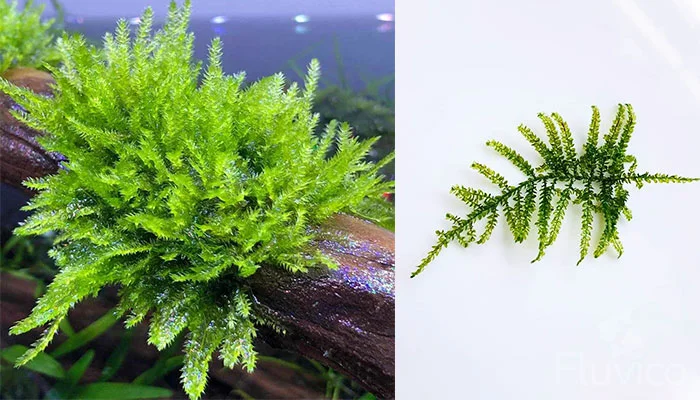
Facts & Overview – Peacock Moss
Peacock Moss originates from Asia, which is well-known for its rich and diverse flora. It’s a slow-growing species, but when given the right conditions and time, this moss can form lush, verdant carpets that are incredibly pleasing to the eye.
Thanks to its low light requirements and adaptability to various water conditions, it’s a great choice for both beginner aquarists and seasoned enthusiasts. It’s not fussy, meaning it doesn’t need a CO2 setup to grow, although it will certainly benefit from it.
Excellent for aquascaping, you can give your tank a lush, green, natural-looking environment that is beneficial for its inhabitants too. While it adds aesthetic value, it also provides a haven for small fish and shrimp, offering them places to hide and explore.
Moreover, its feathery fronds are excellent at trapping debris and excess nutrients, helping maintain a clean and healthy tank environment.
| Fact | Details |
|---|---|
| Scientific Name | Taxiphyllum sp. ‘Peacock’ Taxiphyllum spiky |
| Common Name | Spiky Moss or Peacock Moss |
| Native Region | Asia |
| Max Size (Approx) | 4 inches (10cm) |
| Light Requirements | Low to Medium |
| Ideal Water Parameters | pH 5.5 – 7.5, Temperature 22-28°C |
| Growth Rate | Slow |
| Tank Placement | Foreground, Midground, or Background |
| Propagation | Division or Fragmentation |
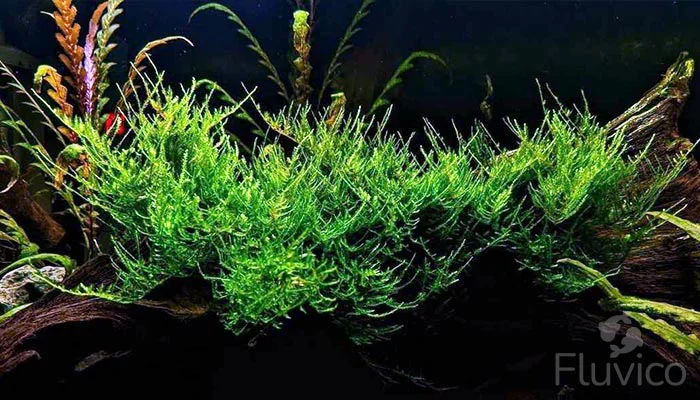
Care & Growing Guide
Tank Requirements
Spiky Moss (Peacock Moss) is highly adaptable, but it does appreciate stability. Provide a well-established tank with clean, well-oxygenated water. In terms of decoration, it can be attached to hardscapes like driftwood, rocks, or decorations. It doesn’t require strong water flow, and moderate flow will suffice.
Tank Size
It doesn’t require a huge tank – it can thrive even in nano tanks. However, as it can spread quite wide and form dense mats, a tank of at least 10 gallons is recommended.
Water Parameters
This Moss isn’t too picky about water parameters, but it does best in soft to moderately hard water. Maintain a pH between 6.0 and 7.5, and keep the water temperature between 22 to 28°C (72-82°F).
Nutrition
Like other mosses, doesn’t have a traditional root system. It absorbs nutrients directly from the water. A high-quality aquarium fertilizer can be added to provide the necessary nutrients.
CO2
Although moss doesn’t need CO2 supplementation to grow, it will definitely benefit from it. CO2 supplementation can lead to denser, faster growth.
Lighting
The lighting should be low to medium. Peacock Moss can survive in higher light intensities but too much light can encourage algae growth. 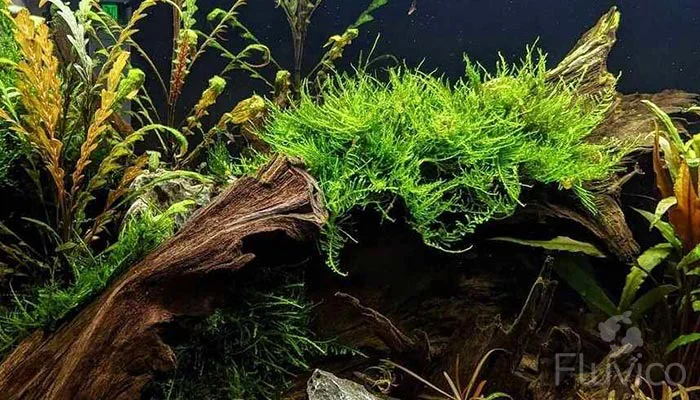
Substrate
Substrate isn’t much of a concern for Peacock Moss as it can be attached to hardscapes. However, if you wish to anchor it in the substrate, choose something like aqua soil or gravel.
Trimming & Pruning
To keep your Peacock Moss looking its best, regular trimming is recommended. This will promote bushier growth and prevent the lower parts of the moss from getting shaded and turning brown.
Tips to Make Your Peacock Moss Grow Faster
For faster growth, ensure your moss receives enough light and nutrients. Using a CO2 system can also speed up growth. Regular trimming will also encourage the moss to spread and grow more densely.
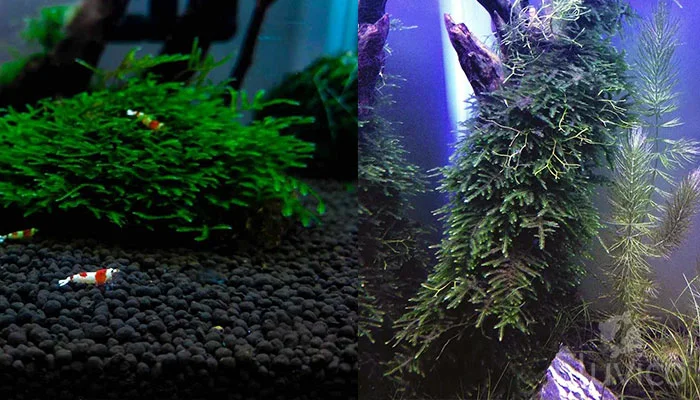
Compatible Tank Mates
Peacock Moss is peaceful and very versatile, making it compatible with a variety of tank mates. It works well with small peaceful fish, shrimps, and snails. Aggressive or herbivorous fish that might damage the moss should be avoided.
How to Plant, Aquascape & Propagate
Peacock Moss doesn’t need to be planted in the traditional sense. It can be attached to surfaces or left to float. For an eye-catching aquascape, try attaching it to driftwood or rocks.
How To: Attach Peacock Moss To Driftwood or Hardscape
- Take a small portion of Peacock Moss and place it on the driftwood or hardscape.
- Use a fishing line, cotton thread or super glue to gently secure the moss to the hardscape.
- Over time, the moss will start to attach itself and grow onto the hardscape.
How to Propagate
Propagation of Peacock Moss is straightforward. When you trim your moss, don’t throw away the cuttings. Instead, attach them to a new surface. They will soon start to grow into new moss.
Tips for effective carpet coverage
To create a carpet effect with Peacock Moss, you’ll need a mesh to hold the moss down.
- Cut the mesh into the size and shape you want your carpet to be.
- Spread the moss evenly on the mesh and use fishing line or thread to secure it.
- Place the moss-covered mesh on the bottom of your tank. Over time, the moss will grow through the mesh and form a beautiful carpet.

Common Issues (FAQs & Solutions)
Turning Yellow
Yellowing of Spiky moss is often due to a lack of nutrients, particularly nitrogen. Ensure your tank has a balanced level of macro and micronutrients. If your water is too clean, consider adding a quality aquarium fertilizer.
Turning Brown
Browning moss can indicate a lack of light. While this Moss doesn’t require a lot of light, it still needs some. Also, check for algae growth, which could be blocking light to the moss.
Black Spots
Black spots can appear if the moss is exposed to too much light, causing it to burn. Reducing light intensity can resolve this issue.
Disintegrating
If your Peacock Moss starts to disintegrate, this could be due to poor water quality. Regular water changes, testing for harmful chemicals, and adding a good filtration system can help maintain optimal conditions.
Moss Detaching
If your moss is not properly secured or if the flow in the tank is too strong, it may detach from its surface. Try reattaching it securely, and adjusting the water flow. 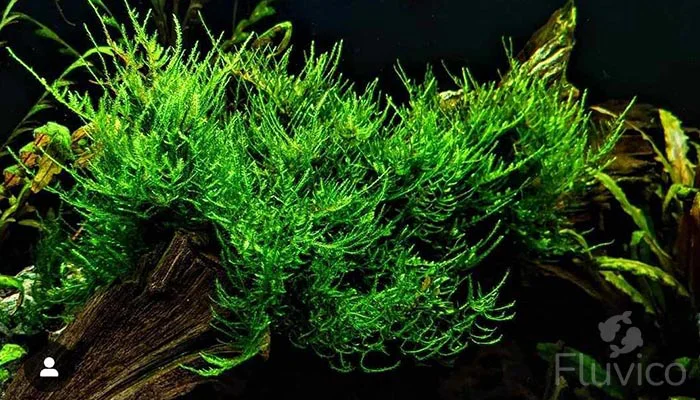
Should You Add Peacock Moss to Your Aquarium?
By now, you’ll know that this moss is a great addition to your aquarium. It provides aesthetic appeal, serves as a refuge for small creatures, and aids in maintaining water quality.
With its easy care and propagation, both beginners and seasoned aquarium enthusiasts can enjoy its benefits.
So, why not give it a try?
As always, comment below with your questions or Mossy tips!


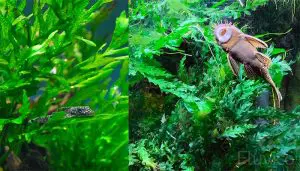
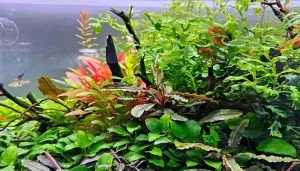
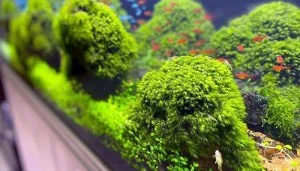
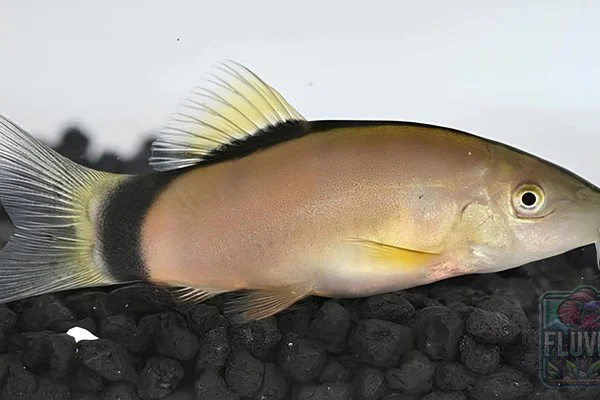
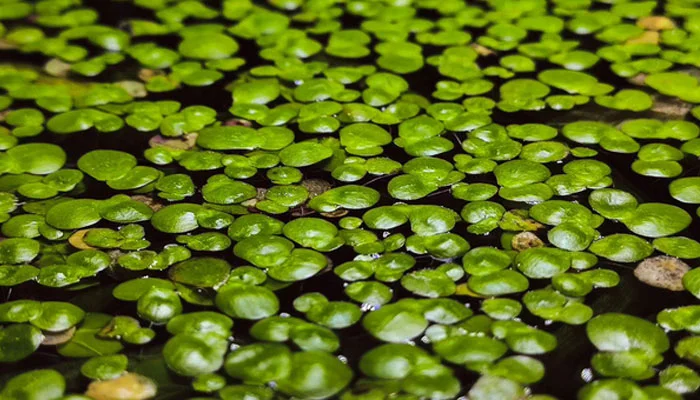
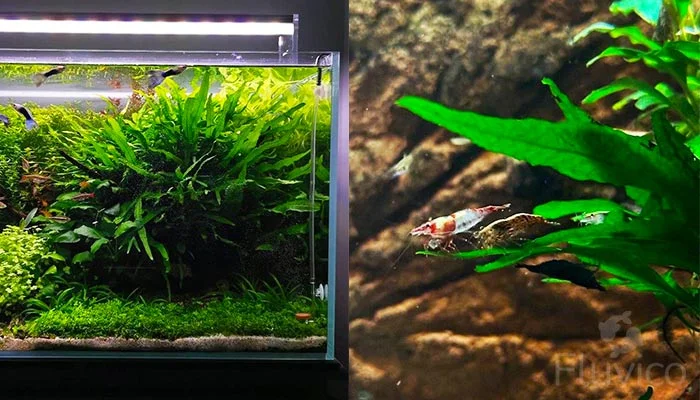
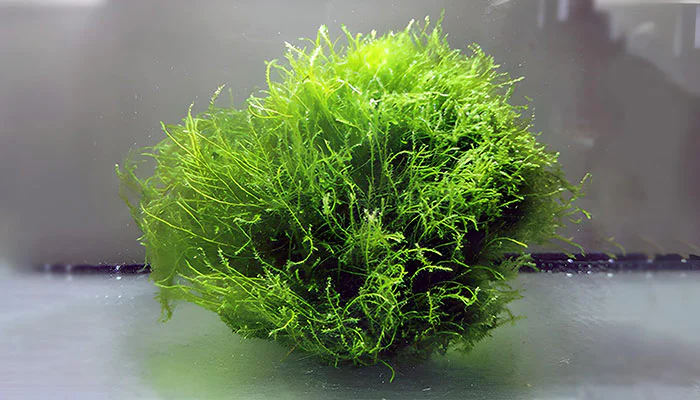
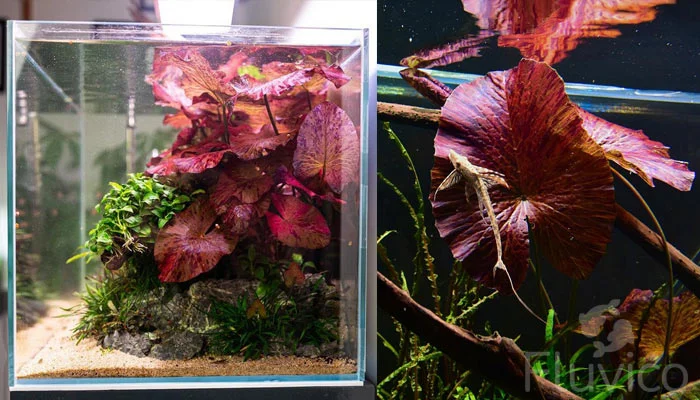
Love Peacock Moss? Have any Peacock Moss Questions? Comment below and myself or Dan will be happy to help : )